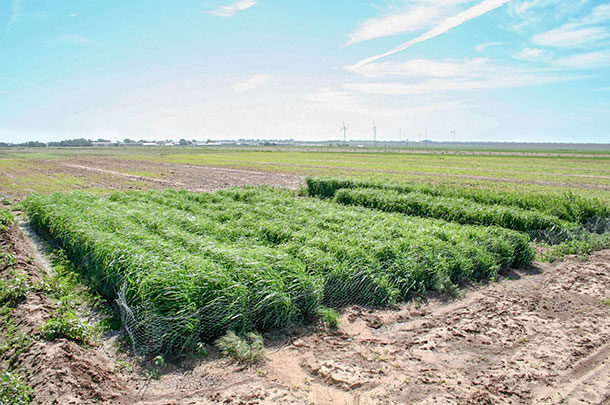Agricultural Research Service (ARS) scientists are trying to save water in one of the fastest growing dairy regions in the U.S. They hope to encourage dairy producers to use a drought-tolerant crop the same way it’s sometimes used in India – as cattle feed.
Dairy production is increasing in the Southern High Plains region of West Texas and New Mexico because of the favorable climate and available land. Most dairy producers use corn silage as a feed component. West Texas also has a high concentration of beef cattle, which are largely fed corn grain. But growing corn uses more water than some other crops in the region. Since the region’s water for irrigation comes from the Ogallala Aquifer, which is being stretched beyond capacity, conserving water is important.
Prasanna Gowda, an ARS agricultural engineer, knew that dairy cattle in his native India are raised on finger millet (Eleusine coracana) forage. Studies in India, where finger millet grain is used to make breads, porridge and baby food, show that it uses 10 to 20 percent less water than sorghum and grows on marginal land. It also has methionine, an essential nutrient that helps dairy cattle digest feed, wean healthier calves and produce more milk.
Gowda and his colleagues in Bushland, Texas, selected five types of finger millet from the ARS Plant Genetic Resources Conservation Unit in Griffin, Georgia. They chose types that would mature in the Southern High Plains’ four-month growing season and would produce the most plant material (or “biomass”) as potential silage.
The researchers grew the finger millet varieties in Bushland for 120 days. They selected plants of each variety and sent them to a commercial laboratory for analysis of crude protein, fiber content and other nutritional qualities. They compared finger millet’s nutritional qualities to those of corn and sorghum grown in neighboring plots. Forage sorghum is sometimes fed to cattle and uses less water than corn, but it has fallen into disfavor because it provides less energy than corn.
Gowda found that finger millet had higher levels of potassium, twice as much calcium and four to five times as much phosphorus as corn, and comparable levels of protein, fiber and total digestible nutrients. (Calcium and phosphorus deficiencies can reduce appetite and growth in dairy cattle and lower milk production.) Finger millet also used less water than the corn and sorghum, but it produced lower forage yields.
The results show that finger millet could be fed to dairy cattle as a supplement to corn and could save water in areas where water is limited.
“We don’t see finger millet completely replacing corn, but adding it to the diet of dairy cattle could provide them with the nutrition they need and reduce the overall need for water,” Gowda said. He plans future studies on the milk quality of dairy cattle fed finger millet, how much biomass finger millet produces in the region’s climate and soils, and exactly how much water finger millet could save in the region. ![]()
Dennis O’Brien is with the ARS Office of Communications.
This article was originally published in the June 2016 issue of AgResearch Magazine.
PHOTO: An ARS test plot of finger millet in Bushland, Texas. Photo by Prasanna Gowda, courtesy of Agricultural Research Service.











